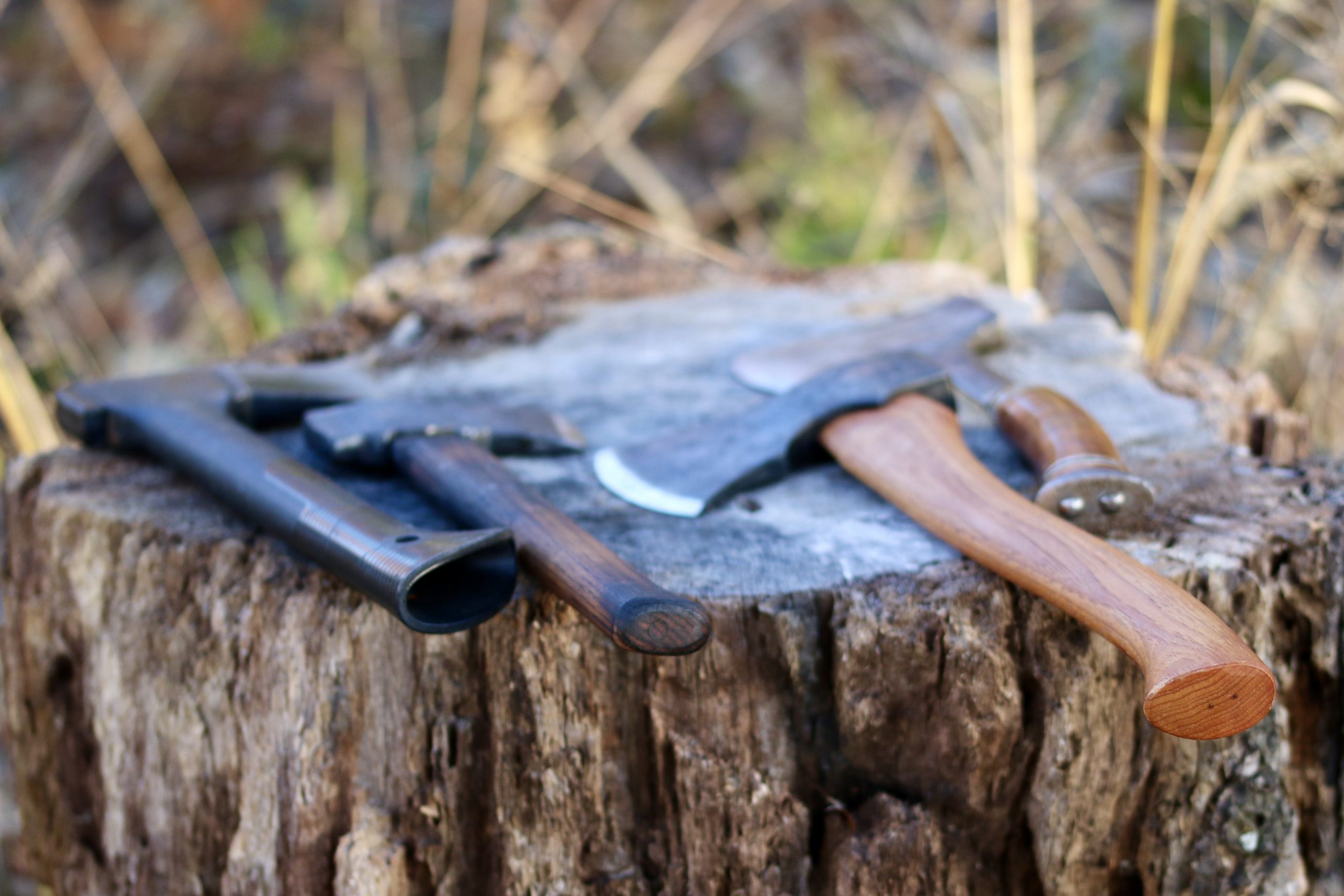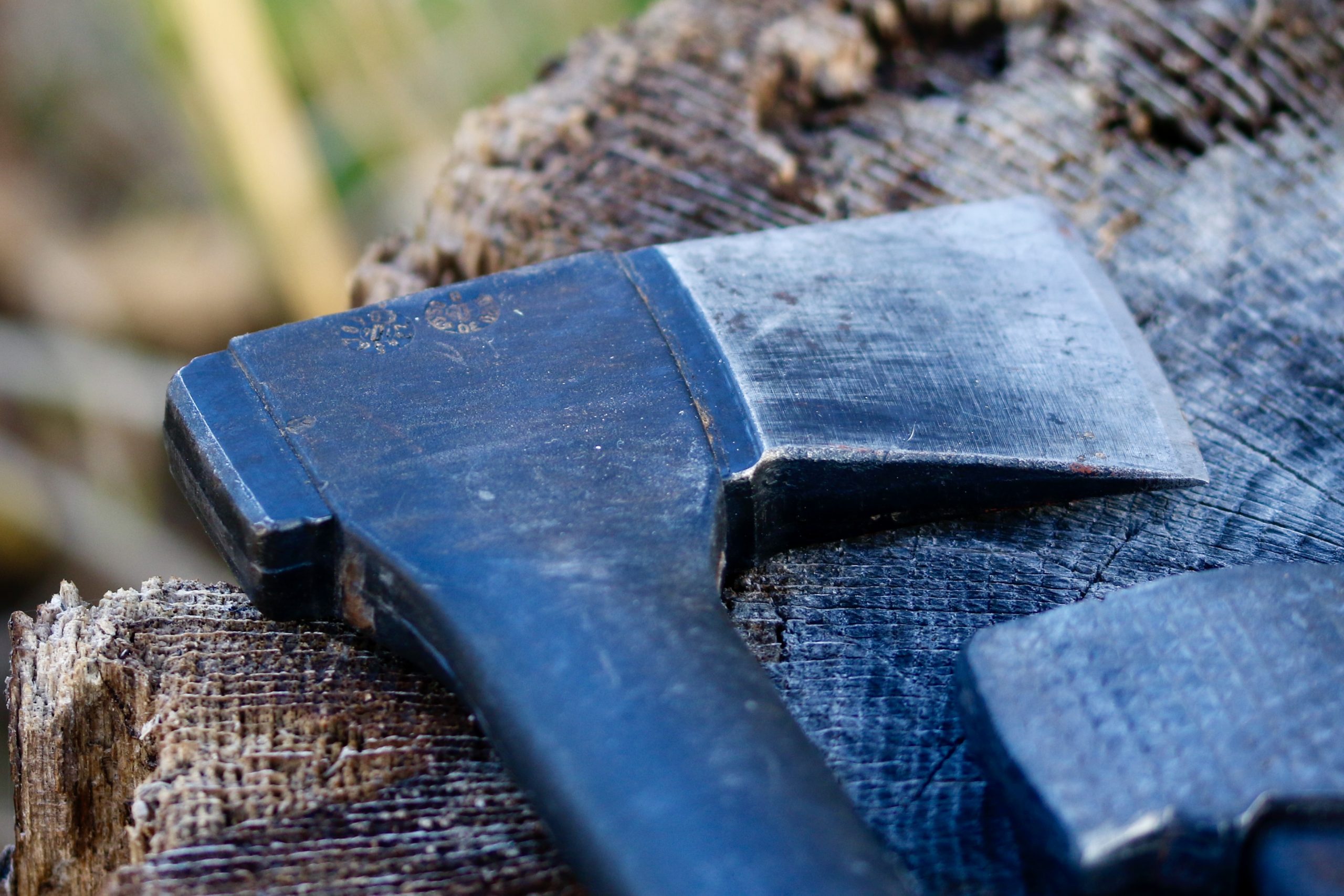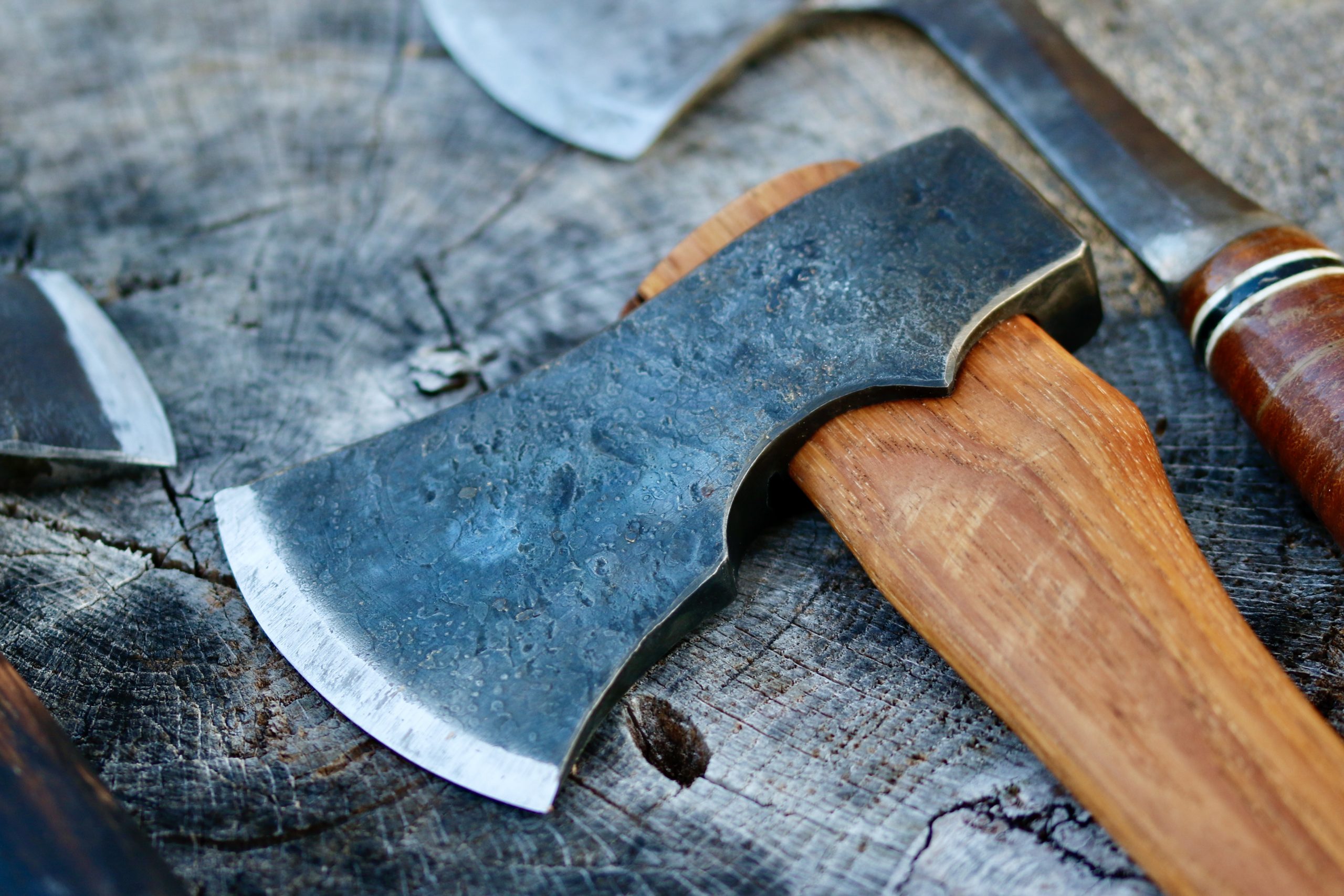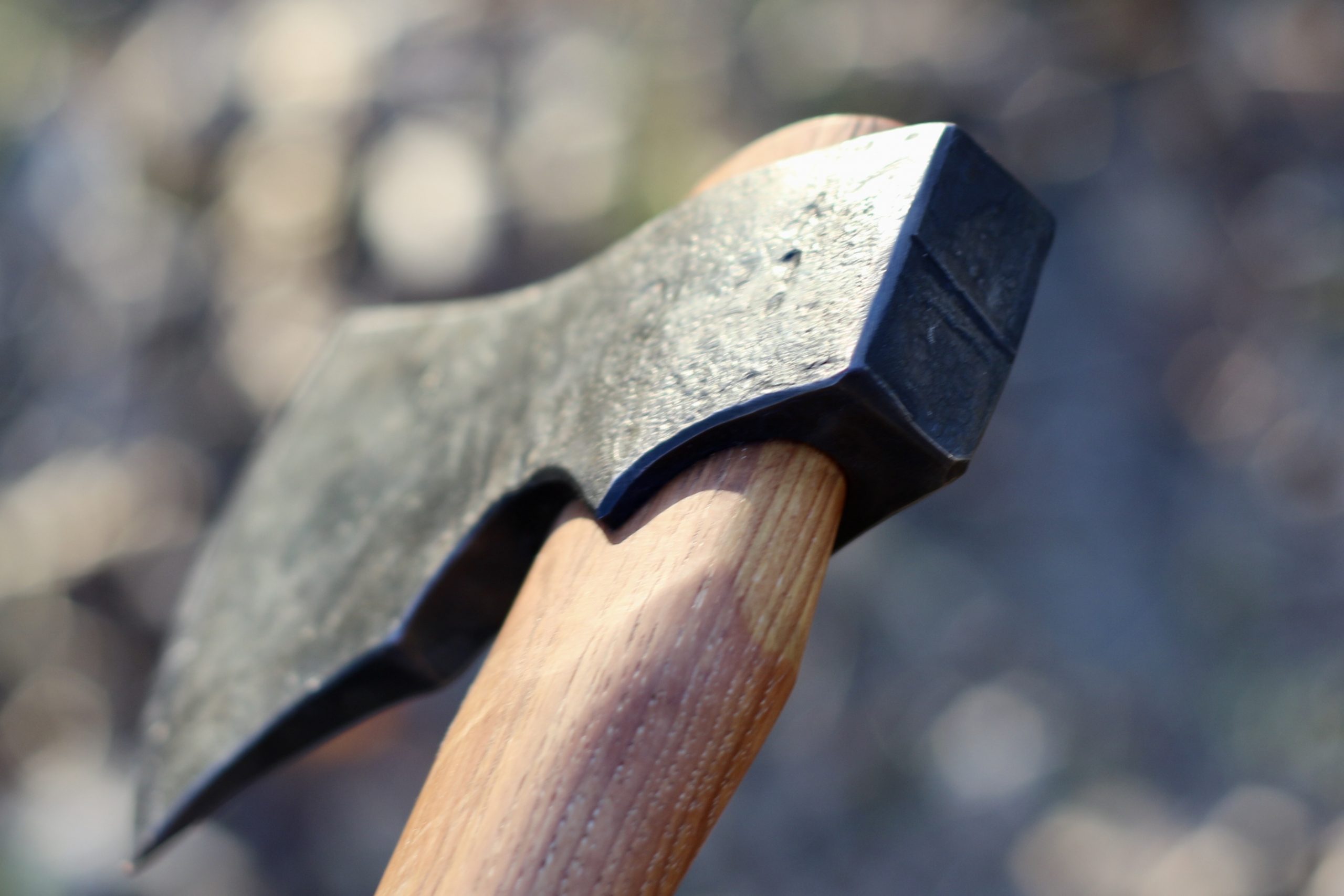As you might have guessed, I’m a sucker for tools. I’m not a safe-queen kind of collector, but I do tend to add multiple versions of the same kind of tools. I’ve got more micro-9mms than I care to admit, even though I’m only carrying my Hellcat with any regularity. And the same can be said for my love of the hatchet.

I taught a Wilderness Survival course back in October and it allowed me the opportunity to put some new hatchets to the test. The hatchet, in its most basic sense, is a transitional tool: not quite an axe, not quite a fixed blade. And if weight isn’t an issue—like when I’m car camping—I’ll have a hatchet, a felling axe, and a splitting axe (in addition to a sheath knife or two).

But what if hatchet weight is an issue?
A well-made sheath knife is completely capable of taking on the tasks I’d normally relegate to a hatchet. Heavy, full-tang blades on sheath knives can chop (though not as well as a hatchet). They can baton (as well or better than some hatchets). And they’re easier to carry (but harder to maintain) than most hatchets.

My answer to this question is an odd bit of math. If you have a crazy solid pocket knife that is suited for the woods then you can get by without a sheath knife and go straight for a good hatchet. If you don’t, you’ll need a sheath knife. And if that fixed blade is a bit on the anemic side, you’ll want a hatchet, too.

Hatchet weight equals performance.
Smaller, lighter hatchets are just fixed blade knives with oddly shaped handles. And if the handle is also short, then it might as well be a knife. These are super useful for skinning and making kindling, but you’ll struggle to get leverage for chopping through green wood and they lack the mass in their heads that make splitting larger kindling an easy task.
Heavy, bigger hatchets, though, weigh more. And that sucks.

Handle Materials
For traditionalists, survivalists, and anyone who gets off-grid, wood reigns supreme. The reason here is simple: a wooden handle can be replaced, even in the field.
Plastic handles are super light and great for low-risk camping. But these types of hatchets can’t be used as hammers. Hit their poll and you can sheer off the plastic band that holds the head in place. Ask me how I know.

Steel-shafted hatchets are much less likely to pop, but they aren’t fool-proof. I’ve yet to break an Estwing, though. I’ve got a couple of hammers that I inherited from my father—early rubber-handled steel hammers that have taken and given out more than four decades of beatings with no issues. And should you damage one, it wouldn’t be hard to improvise a fix for the handle that would keep it useful.

Unless you break the steel. That’s a different story.

Wood, though. Wood is lovely and has character. You can fall in love with wood.
Maybe not with axe-handle wood. I’d recommend that you maintain a Jedi-like approach to attachments to wooden handles. And to hell with anything fancy or with complicated grain structure. Straight-grained hickory is perfect, almost always devoid of character, and easy to find.

And wood, unless you happen to break your hatchet handle in the middle of some imaginary desert devoid of trees, is easy to find in the wild. With a solid pocket knife, you can whittle a new handle—one that will at least get you by—without too much trouble.
Getting a broken handle out of an axe head can be difficult. Avoid the burn-it-out temptation, unless you are planning on re-tempering the head. That would require heating the entire head to a cherry red, then doing a controlled oil quench on the cutting edge. It is complicated, and the blade would still need to be tempered after the quench to ensure that the cutting edge retains enough rigidity without being too brittle.

I’ve seen lots of folks burn out their axe heads and then re-handle them. The result is typically an annealed piece of steel that deforms badly when struck on the poll and a blade that won’t hold an edge.

Hatchet Blade Geometry
For advanced considerations, look to the thickness of the blade, the angle of its cutting/splitting bevels, and the curve in the cutting edge from the toe to the heel. Each has slightly different capabilities.

A curved blade cuts cleanly and can be useful for fleshing out a hyde as the corners are less prone to dig in.

A thin blade cuts weight and cuts well, but is more prone to stick when used for splitting.

A wide blade is harder to keep razor-sharp, but splits well.

And, just like with any conversation about knives, we should look at the blade composition. It basically comes down to two choices: stainless or basic tool steels.
If given a choice, I avoid stainless. While some of the boutique (i.e. expensive) stainless alloys are fine choices, a good carbon steel is always going to be easier to resharpen and maintain in the field.



